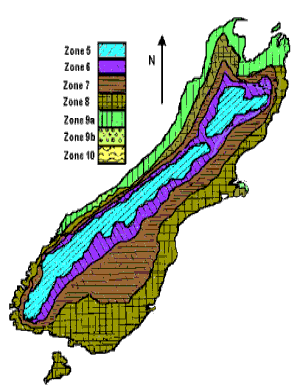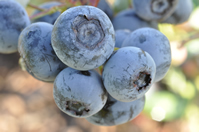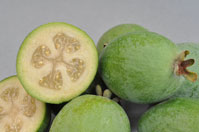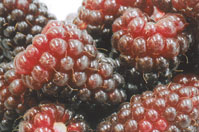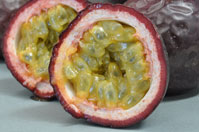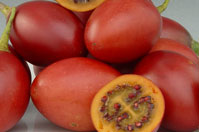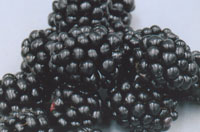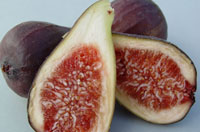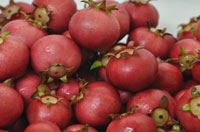
Cold Hardiness and Climate Zones
Hardiness and climate suitability of any plant is a fairly complex subject which depends on age, available nutrients, summer-autumn maturing conditions and general climate, along with the actual position of planting. All these parts of the equation change with time as trees establish, shelter develops and root competition comes into play. Reference books often recommended minimum temperatures well above 0°C for certain species. These too are partly affected by the factors above, as well as how dry the plants are in winter so they should only be viewed as a guide too.
Age
Many plants go through a change in foliage type from "juvenile" to "adult". This is often associated with differences in leaf shape, thickness and hairyness which all combine to make the leaves tougher and more temperature tolerant. Age also affects how well the plant is able to utilise soil nutrients around it. Many of the softer, short lived plants such as Naranjilla, Tamarillo and Black Passionfruit tend to exhaust the soil of certain elements quickly, making them less resilient, unless they are regularly supplemented with fertiliser and organic mulches. Trees and longer lived vines tend to develop wide reaching root systems.
Available nutrients
Adequate nutrient supply allows the plant to develop leaves and stems to maximum strength, as well as allowing the cell sap to be more resistant to freezing.
Summer conditions
Summer-autumn conditons which harden the stems and leaves of plants play a major role in preparing plants for winter. Just as fruit ripens, stems and leaves go through a ripening process which involves heat hardening the leaves and stems, followed by the conditioning of cool nights in autumn which slow growth and encourage dormancy. If this process is interupted by an early frost then damage will occur to plants which are normally quite hardy.
General climate and microclimates
There is little we can do about the general climate of where we garden which is dictated to by prevailing winds and storm patterns as they pass over the country, in conjunction with geographical features. In the garden however there are often many microclimates which can alter by several degress the minimum temperatures that any plant will experience if planted there. By careful site selection such as under the edge of evergreen trees, tender plants may be grown and receive full sun and warmer conditions. The same spot will be cooler in summer and avoid the problems of heat exposure. A dryish position in winter is often beneficial to many species.
Hardiness Charts
Many gardening books illustrate hardiness charts of one form or another. One of the most widely accepted systems is the US Department of Agriculture's Hardiness Zone system showing approximate average minimum temperatures for each zone. This is a very broad system, which usually has an individual breakdown for each state in the US to allow local growers to get a closer indication as to there climate. Plant reference books often publish a zone rating such as zone 5 (very hardy and will grow from zone 5-10) or will specify zone 5-8 (where something like an apricot is hardy, but needs winter chill to grow properly).
| Zone | Celcius (°C) |
Fahrenheit (°F) |
| Zone 1 | Below -46°C |
Below -50°F |
| Zone 2 | -46 to -41 |
-50 to -40 |
| Zone 3 | -41 to -35 |
-40 to -30 |
| Zone 4 | -35 to -30 |
-30 to -20 |
| Zone 5 | -30 to -24 |
-20 to -10 |
| Zone 6 | -24 to -18 |
-10 to 0 |
| Zone 7 | -18 to -13 |
0 to 10 |
| Zone 8 | -13 to -7 |
10 to 20 |
| Zone 9a | -7 to -3 |
20 to 27 |
| Zone 9b | -3 to 0 |
27 to 32 |
| Zone 10 | 0 to 5 |
32 to 40 |
These charts should only be viewed as a guide, since in most gardens there are spots that are significantly cooler or warmer in different seasons as to create microclimates.
This is a general guide only to North Island climate zones
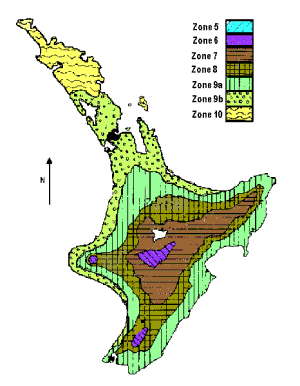
This is a general guide only to South Island climate zones
